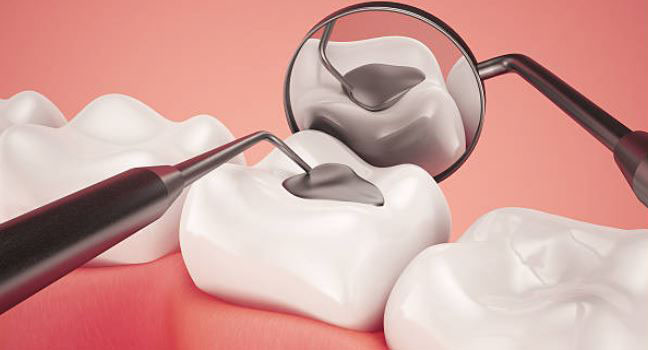What are Amalgam Fillings?
For the safety of our team, patients, and environment, we at Newnan Dentistry take extra precautions when removing and handling mercury.
In past years, when a cavity in a tooth needed to be filled, the filling would be made of amalgam, an alloy consisting of a combination of mercury and other metals. While these fillings were considered durable and safe at one time, more recently health professionals have found that amalgam fillings could possibly create several health problems in patients, including insomnia, headaches, nerve damage, kidney problems, and respiratory failure.
Why Have Amalgam Fillings Removed?
Over time, mercury vapors are released when we brush our teeth, chew gum or eat hard foods. To avoid exposure to these toxins, many people may look into having these old, silver fillings replaced.
Older silver fillings can also cause teeth to fracture for several reasons such as: hiding decay below the filling; expanding from natural moisture of the mouth; and wear and tear over decades of use and hold and cold temperatures. If your metal fillings are worn, cracked, or if there is severe decay beneath the metal filling, the best option would be to have them removed and replaced with white, mercury-free composite fillings.
The Removal Process
Removing amalgam fittings is a complex process. The amalgam cannot simply be removed and replaced with newer composite material. For safety reasons, a dentist must use a specific procedure to remove the amalgam filling and protect the patient and dental team from possible mercury poisoning. When amalgam fillings are removed, there is the inherent risk of mercury to be swallowed or injested. So prevent this from occuring, the removal proceedure is carefully planned.



